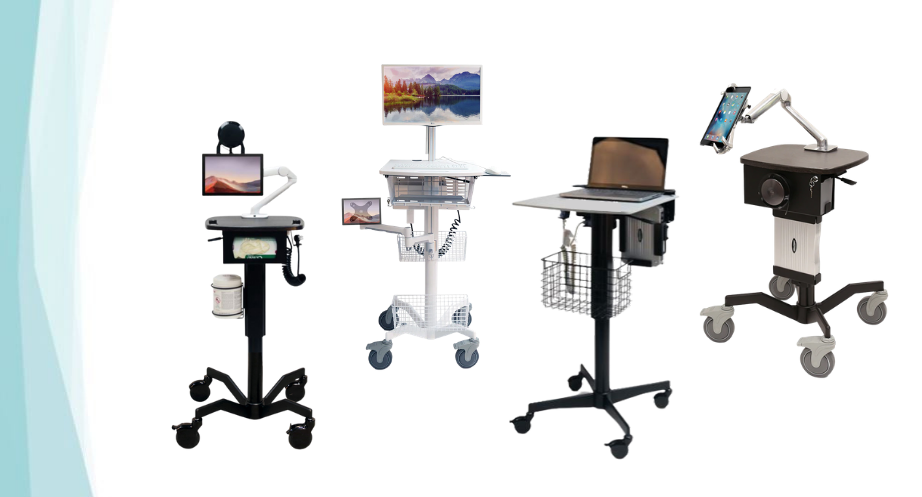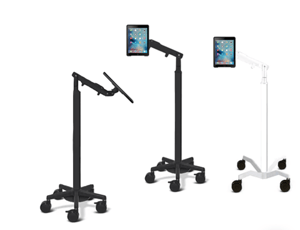By FHP on 2/10/21 3:41 PM
When it comes to improving access to medical care, support, and education, few pathways are as valuable as telehealth.
But what exactly does it take to launch an effective telehealth program? And what specialized equipment is needed to ensure a successful patient interaction from a distance?
What is Telehealth?
Before we address equipment needs, it's essential to define precisely what telehealth is, as many people assume the term is interchangeable with "telemedicine'.
But in actuality, telemedicine only involves the use of digital communications technologies to conduct remote appointments for diagnosis and treatment. Telehealth, on the other hand, encompasses a range of services, including telemedicine appointments, health assessments, preventive care, and even administrative activities, that are performed remotely through digital tech.
Depending on the services offered, providers can deliver telehealth programs via:
- Live and Interactive Videoconferencing: A two-way audiovisual connection between a patient with their healthcare provider.
- Store and Forward Videoconferencing: A recorded video, image, or data is sent to a remote healthcare provider.
- Remote patient monitoring (RPM): The use of digital technology to record personal health information like blood pressures, weight, and pulse at the patient's home or other location. That data is then transmitted to a remote healthcare provider for review.
- Mobile health (mHealth): Healthcare and other public health information provided through mobile devices.
Why are Telehealth Services Important?
Telehealth makes healthcare more accessible to underserved populations, including people who live in rural or remote areas where providers – particularly specialists -- are scarce. Such services also increase convenience for patients limited by mobility issues, time constraints, or a lack of viable transportation options.
Beyond those benefits, the availability of electronic medical records and video conferencing technologies help improve communication and coordination among the members of a patient’s care team. RPM technology and personal health apps have proven useful in supporting patient efforts towards healthcare self-management.
Over the past year, telehealth services have been crucial to reducing the spread of COVID-19. In fact, one recent survey found 97% of responding practitioners have chosen to expand their telehealth offerings because of the global pandemic. It’s likely that these new programs will remain in place even once the crisis has passed.
What are the Basic Equipment and Tech Requirements for Telehealth?
This question's answer will vary somewhat depending on the type of telehealth services offered by a particular clinician or facility. However, any provider looking to establish a telehealth program should expect to need:
- A Stable Internet Connection: Wireless or hard-wired internet capabilities to stream high-definition video and improve the patient experience.
- An Exam Room or Office: Telehealth providers should have access to a clean, pleasant, and private physical space to conduct virtual visits.
- A Video Camera Device: Depending on the capabilities desired -- movement tracking, zoom, HD quality, and more – the cost of a good video camera can range from relatively cheap to expensive.
- An HD Audio Device: Many telehealth providers undervalue the importance of audio, but clear high-definition audio capability can significantly improve patient satisfaction with telehealth.
- Basic Speakers: Most laptops, tablets, and desktop computers feature internal speakers, but external speakers are needed when device volume isn't loud enough. Headsets and headphones with an attached mic are comfortable and hands-free alternatives to speakers, especially for those who wish to drown out any background noise that could prove distracting.
- An Interactive Screen: Options include monitors with either touch screen capabilities or a standard keyboard and mouse.
- Videoconferencing Software: User-friendly software is needed for virtual appointments, administrative meetings, and educational seminars.
- Remote Patient Monitoring Kits for At-Home Telehealth Visits: Internet-capable scales, blood pressure monitors, glucometers, and other devices that allow for the transmission of vital signs while connected to a mobile kiosk, tablet, or smartphone from home
- Peripheral Devices: Stethoscopes, otoscopes, and other medical devices are standard during any medical appointment, virtual or otherwise. But those used for telehealth must have the ability to transmit images and data for diagnosis, whether to be viewed in real-time or recorded for later viewing.
- Telemedicine Carts: All-in-one systems built by FirstProducts.com contain all essential components for the provider site, including a computer, peripherals, and more. These convenient, wheel-mounted mobile workstations can be easily moved anywhere they’re needed within a practice or healthcare facility.
HIPPA Concerns in Telehealth
HIPAA not only protects patient privacy but also encompasses security standards for healthcare providers and those who work with them. In regards to telehealth and telemedicine, the HIPAA Security Rule stipulates that:
- Only authorized users should have access to ePHI.
- A system of secure communication should be implemented to protect the integrity of ePHI.
- A system of monitoring communications containing ePHI should be implemented to prevent accidental or malicious breaches.
Clinicians and healthcare facilities are responsible for using HIPPA compliant solutions when offering telehealth services, so it's important to ask potential vendors how they ensure HIPAA compliance and what they've done to build a 100% secure platform. Providers must also enter into a Business Associate Agreement (BAA) with their telehealth vendor to document:
- The types of protected health information the vendor can access.
- The security measures the vendor will implement to protect ePHI.
- The actions that the vendor will take should a security breach occur, including timelines and processes for notifying patients.
- Allowable uses and disclosures of ePHI to meet the requirements of the HIPAA Security Rule.
The Business Associate Agreement must be completed and signed before a vendor comes into contact with any patient information.
Innovative Telehealth Solutions for Today’s Healthcare Providers
First Healthcare is ready to partner with healthcare practitioners and facilities to ensure the success of their telehealth programs.
From Move-It telemedicine carts and tablet roll stands to WOW carts and EMR/EHR charting technology, our innovative, high-quality, HIPAA compliant solutions allow providers to offer a range of telehealth services that improve patient access, satisfaction, and outcomes.
We've been assisting healthcare professionals for over 50 years. If First Healthcare doesn’t already have your perfect-fit telehealth solution available, we'll customize one for you.
To Learn More and Arrange for Your Complimentary Telehealth Demo, Contact First Healthcare Today at 800.854.8304.
_11wX8.5h-FINAL.png?width=721&name=FP-Logo-Horizontal-(COLOR)_11wX8.5h-FINAL.png)




comments